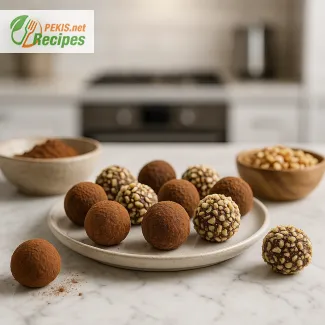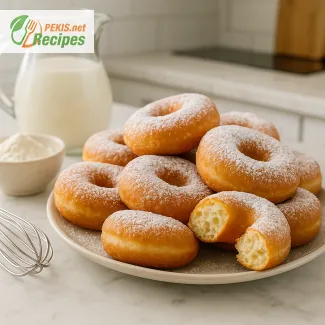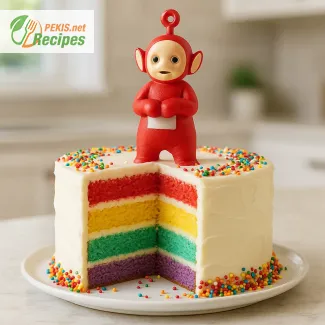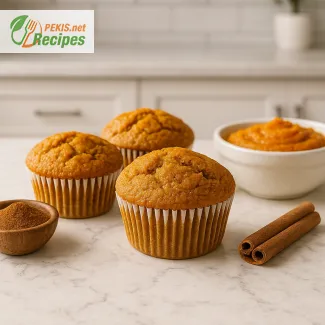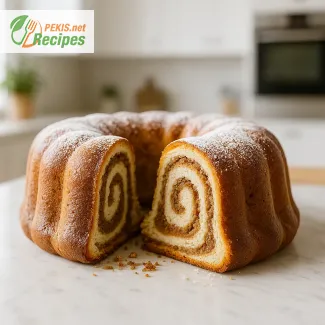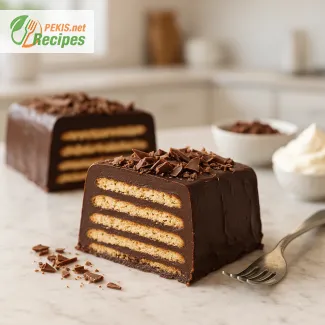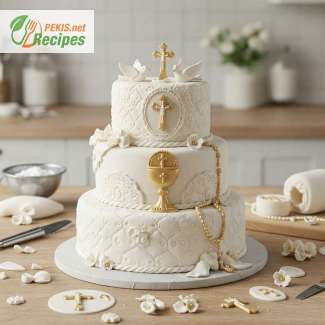
Create Stunning Fondant Decorations for a Memorable First Holy Communion Cake
The Art of Fondant Decorations for a Special Occasion
A First Holy Communion is a milestone event, a moment cherished by families as their child takes an important spiritual step. Such a special occasion deserves an equally special cake—one that beautifully reflects the purity, joy, and significance of the day. Fondant decorations allow you to create an elegant, personalized touch that transforms a simple cake into a true masterpiece. Whether you are a professional baker or a home enthusiast, crafting intricate fondant designs adds an element of sophistication and meaning to your celebration.
Why Fondant is the Perfect Choice for Communion Cakes
Fondant is a versatile and malleable sugar paste that allows for intricate detailing, smooth finishes, and three-dimensional decorations. Unlike traditional buttercream, fondant provides a polished, professional look that is ideal for religious celebrations. With the right techniques, you can craft delicate crosses, praying hands, chalices, doves, or even a Bible—all symbols that beautifully represent the spiritual essence of a First Communion.
Additionally, fondant decorations can be prepared ahead of time, making cake assembly stress-free on the big day. Whether you're working with store-bought or homemade fondant, achieving stunning results is within reach when you follow the right steps.
Essential Tools and Materials for Fondant Decorations
Before you begin, gathering the right tools ensures precision and ease in crafting detailed designs. Here are some must-have essentials:
- Fondant rolling pin – for achieving the perfect thickness
- Cutters and embossers – to create shapes like crosses, flowers, and doves
- Silicone molds – for intricate details such as praying hands or lace patterns
- Edible gold or silver dust – to add a touch of elegance
- Food-safe brushes – for applying edible glue or shimmer
- Modeling tools – for shaping and refining intricate designs
Having these tools on hand allows for seamless creativity and professional-quality results.
Choosing the Right Colors and Themes
When designing fondant decorations for a First Holy Communion cake, choosing an appropriate color palette is essential. Traditional choices include:
- White – symbolizing purity and innocence
- Gold or silver accents – representing spirituality and celebration
- Soft pastels – such as baby blue or blush pink for a gentle, elegant touch
Incorporating these hues ensures that your cake aligns with the reverence and beauty of the occasion. Adding delicate sugar pearls, lace patterns, or edible flowers further enhances the cake’s aesthetic appeal.
Step-by-Step Approach to Fondant Decoration
Creating fondant decorations is a rewarding process that requires patience and precision. Whether you're rolling out simple cutouts or sculpting three-dimensional elements, each piece contributes to the overall elegance of your cake. Some common decorative elements include:
1. Elegant Crosses
A cross is a timeless symbol for First Holy Communion. You can create a delicate fondant cross using cutters or mold it by hand for a more organic appearance. Adding small embellishments like pearls or embossed textures elevates its design.
2. Praying Hands or Rosary Beads
These intricate details bring a profound spiritual significance to the cake. Rosary beads can be crafted by rolling tiny fondant pearls and connecting them with a miniature fondant cross. Praying hands molds make it easy to achieve a detailed, life-like representation.
3. Chalices and Holy Scriptures
A fondant chalice with a host (Eucharist wafer) is a beautiful addition, symbolizing the Sacrament of Communion. A small, fondant-crafted Bible with gold detailing can also serve as a meaningful centerpiece decoration.
4. Doves and Floral Embellishments
Doves are a universal representation of peace and spirituality. Using fondant cutters, you can create graceful dove silhouettes that rest elegantly on the cake’s surface. Complementing the design with handcrafted roses, lilies, or blossoms adds a gentle, natural touch.
Making Your Decorations Last
Fondant decorations can be prepared days in advance, allowing them to firm up for better application. To ensure longevity:
- Store them in a cool, dry place – humidity can soften fondant, causing it to lose shape
- Use cornstarch or powdered sugar – prevents fondant from sticking while rolling and shaping
- Apply edible glue or royal icing – secures decorations firmly onto the cake surface
Proper storage and handling help maintain the structural integrity of your intricate fondant designs.
Elevate Your First Communion Cake with Fondant Mastery
Crafting fondant decorations for a First Holy Communion cake is more than just a baking project—it’s an artistic and heartfelt expression of faith and love. Whether you opt for a classic, minimalist style or an elaborate, ornate design, fondant allows for endless creativity.
By following these tips and techniques, you can create a visually stunning cake that not only captures the significance of the occasion but also delights family and guests alike. Take your baking skills to the next level and turn a simple cake into an unforgettable masterpiece of faith and celebration.
- Prepare gelatin mixture: In a small bowl, sprinkle gelatin over cold water and let it bloom for about 5 minutes.
- Dissolve gelatin: Heat the bloomed gelatin over low heat until fully dissolved. Do not let it boil.
- Add liquid ingredients: Stir in glucose syrup, glycerin, and shortening until melted and well combined. If desired, add vanilla extract for flavor.
- Incorporate sugar: In a large mixing bowl, place half of the powdered sugar. Make a well in the center and pour in the gelatin mixture.
- Mix until dough forms: Stir using a spatula, gradually adding the remaining powdered sugar until a dough forms. Knead by hand until the fondant is smooth and pliable.
- Dust and roll: Lightly dust a work surface with cornstarch or powdered sugar, then roll out the fondant to the desired thickness.
- Create decorations: Use cutters, molds, or sculpt by hand to shape your desired decorations, such as crosses, doves, or rosary beads.
- Let decorations set: Allow fondant decorations to air-dry for several hours or overnight for firmer designs before placing them on the cake.
Mastering Fondant Decorations: Tips to Elevate Your First Holy Communion Cake
Enhancing the Texture and Flavor of Fondant
Fondant is prized for its smooth, polished finish, making it ideal for elegant cake decorations. However, many bakers struggle with achieving the perfect texture and flavor. Traditional fondant tends to be overly sweet, sometimes with a slightly rubbery consistency. Here’s how you can refine the texture and improve the taste of your fondant decorations:
- Reduce the sweetness: A pinch of salt or a few drops of lemon juice balances the excessive sweetness, adding a subtle depth to the flavor.
- Enhance the texture: Adding a bit more glycerin makes the fondant softer and more pliable, preventing it from cracking.
- Boost the flavor profile: Instead of plain vanilla extract, try almond, coconut, or orange extracts to add an extra layer of complexity.
- Use high-quality gelatin: If making homemade fondant, choose premium gelatin for a smoother finish and improved elasticity.
The Benefits of Homemade Fondant vs. Store-Bought
Many bakers opt for store-bought fondant due to its convenience. However, homemade fondant offers several advantages:
- Better taste: Store-bought varieties often have a chemical aftertaste, whereas homemade fondant can be flavored naturally with extracts or citrus zest.
- Improved consistency: Homemade fondant is less prone to drying out, making it easier to shape intricate details.
- Cost-effective: Preparing fondant from scratch is more affordable, especially for large cakes requiring substantial coverage.
- Ingredient control: Avoiding artificial additives and preservatives results in a cleaner, more natural product.
Common Mistakes to Avoid When Working with Fondant
Even experienced bakers encounter challenges when working with fondant. Here are some common mistakes and how to prevent them:
- Dry or cracked fondant: This happens when too much powdered sugar is incorporated or if the fondant is over-kneaded. Adding a drop of glycerin or shortening helps restore elasticity.
- Sticky fondant: If fondant is too soft or sticky, it likely contains excess moisture. Lightly dusting with cornstarch or powdered sugar helps achieve the perfect consistency.
- Uneven thickness: Rolling fondant too thin can cause tearing, while too thick can make decorations heavy. Use a rolling pin with guides to ensure even thickness.
- Air bubbles: Trapped air creates unsightly bumps. Use a fondant smoother to press out any bubbles or gently pierce them with a needle and smooth the surface.
Creative Ways to Personalize Your Fondant Decorations
A First Holy Communion cake should reflect the meaning and significance of the occasion. While traditional decorations include crosses, doves, and chalices, there are many ways to add a personalized touch:
- Textured patterns: Use lace molds, embossers, or stencils to create intricate patterns on fondant.
- Hand-painting details: With edible gold or silver paint, you can add fine lettering or decorative flourishes.
- Ombre fondant effects: Gradually blending colors creates a beautiful gradient effect, adding depth to the cake’s design.
- Sugar flowers: Delicate roses, lilies, or blossoms complement religious motifs beautifully.
Healthier Alternatives for a Guilt-Free Treat
Although fondant is notoriously high in sugar, there are ways to make it a little healthier:
- Use natural sweeteners: Replace some of the powdered sugar with finely ground coconut sugar or a blend of sugar alternatives.
- Reduce artificial food coloring: Opt for fruit and vegetable-based colorants, such as beetroot powder for pink or spirulina for green.
- Gluten-free modifications: Most fondant recipes are naturally gluten-free, but ensure that all added ingredients—such as cornstarch or flavorings—are certified gluten-free.
Storage Tips for Long-Lasting Fondant Decorations
Proper storage is crucial to maintaining the quality of fondant decorations:
- Keep fondant in an airtight container: Exposure to air hardens and dries out fondant, making it difficult to work with.
- Store in a cool, dry place: Avoid humidity, as fondant absorbs moisture and can become sticky.
- Refrigeration is not recommended: Unless sealed properly, condensation forms on fondant when removed from the fridge, causing it to become sticky and unworkable.
Elevating Your Cake Decorating Skills
By making small adjustments to traditional fondant recipes, you can enhance both the taste and texture, creating a visually stunning and delicious First Holy Communion cake. Whether you're experimenting with new flavors, improving pliability, or avoiding common mistakes, these expert tips ensure your fondant decorations turn out flawless. With practice and creativity, every homemade cake becomes a masterpiece, making religious celebrations even more special.
- This recipe is naturally gluten-free.
- Contains gelatin (not suitable for vegetarians or vegans).
- Can contain traces of corn (from cornstarch and glucose syrup).
Substitutions for Allergies & Gluten-Free Alternatives:
- Vegetarian/Vegan Alternative: Replace gelatin with agar-agar (use 5 g agar-agar dissolved in 60 ml water).
- Corn-Free Option: Substitute tapioca starch instead of cornstarch and use rice syrup instead of glucose syrup.
- Calcium: 2 mg – contributes to bone health.
- Iron: 0.1 mg – essential for oxygen transport in the body.
- Potassium: 2 mg – helps in nerve function and muscle contraction.
- Vanilla extract (if used): Contains polyphenols that may support cell protection.
- Cornstarch (if used): Contains trace amounts of phenolic compounds that help in reducing oxidative stress.
